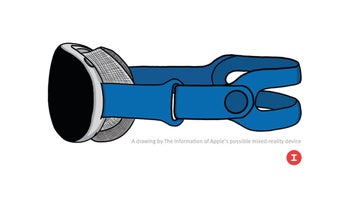Kuo sees Apple's headset delayed until the second half of 2023; huge shortfall in shipments expected

Apple's Mixed Reality headset has seemingly been on track to make its January unveiling and its second-quarter release. And with Apple reportedly changing the name of the device's operating system from rOS (reality Operating System) to xrOS (extended reality Operating System), it did appear as though everything was moving forward swimmingly. But reliable TF International analyst Ming-Chi Kuo took to his Twitter account on Sunday with some bad news.
Kuo sees a delay in the release of Apple's Mixed Reality headset to the second half of next year
In his tweet, Kuo says that his survey of Apple's supply chain indicates that the AR/VR headset might not start shipping until the second half of next year. The analyst says that software issues are holding back the headset and while components might be shipped to Apple during the first and second quarters of 2023, the delay in mass shipments of the device could reduce total shipments next year to less than 500,000 units. That compares to Kuo's original forecast calling for Apple to deliver 800,000-1.2 million headsets.,

Ming-Chi Kuo pushes back his expected time frame for the release of Apple's Mixed Reality headset
If Kuo is correct, we are looking at a 38% to 58% shortfall in units shipped next year compared to his original forecast range. And at the top end of the rumored price range of the device ($3,000), Apple could find itself short $2.2 billion in revenue. He adds that if it turns out that there will be too much time between the rumored January 2023 introduction and the actual release date, the unveiling will also have to be pushed back.
Considering how expensive this product, rumored to be named the Reality One or Reality Pro, is expected to be, Apple can't afford for it to have any bugs at all when it starts to ship. That's especially true with many considering Apple's initial AR/VR headset to be the beginning of a new era for the company that will lead to the release of Apple Glasses. The AR specs, in this writer's view, will be "the next big thing" to come from Apple and could eventually replace the iPhone in importance to the company.
Let's repeat the difference between Virtual Reality (VR) and Augmented Reality (AR) for those who are not sure. The former creates a completely fake environment although it can seem real and the user can have an immersive experience inside this made-up environment. Wearing a VR headset, a user might feel that he is playing a tennis match in front of a huge crowd, To the outsider not wearing a headset, the user looks like a crazy person swatting at the air with a racket.
The headset could feature the powerful M2 SoC under the hood
AR uses a computer-generated overlay on top of a real-world view to disseminate data. A great example of this is "Live View" on Google Maps which helps those walking get to their destination by using a phone's rear camera to show the user a real-world view of what is in front of him with large arrows placed on the screen to help tell the user where to go. Another example is the Pokemon Go app which uses AR to show players Pokemon right in front of them while they view their real-world environment in the background.
The Reality One or Reality Pro headset could end up with Apple's M2 SoC under the hood. The product will track the head movement of the user and could sport as many as 15 cameras. The product is also expected to offer spatial audio or 3D audio. This allows the user to determine if a sound came from in front of him, behind him, from either side, above him, or below him.
Apple's Mixed Reality headset will probably be the most complex product ever designed by Apple and demand for it, despite the hefty price tag, could be massive. As a result, losing a large number of units to the software issue that Kuo tweeted about might create a thriving black market for the headset with demand driving prices to a ridiculous extreme.













Things that are NOT allowed: